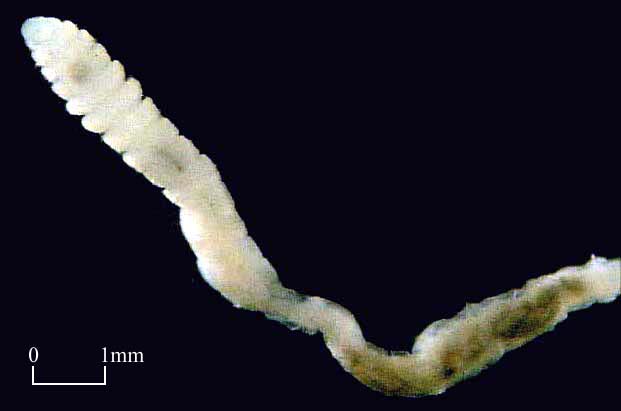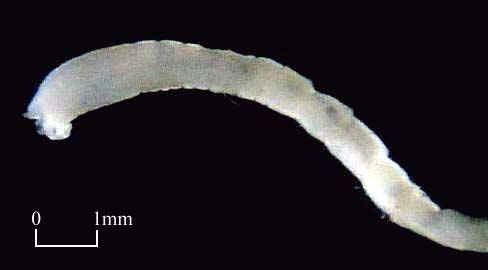Order Capitellida
Family Capitellidae
Features |
| Body: |
cylindrical and slender |
| Prostomium: |
short, truncate, conical and no appendages |
| Eye: |
absent |
| Antennae: |
absent |
| Cirri: |
absent |
| Palp: |
absent |
| Pharynx: |
eversible |
| Parapodium: |
biramous or absent |
| Setea: |
capillary setae in thorax |
| (Fauchald 1977) |
Biological Notes
In general appearance, the capitellids resemble
earthworms. They burrow in sandy mud. The eversible proboscis is used
for burrowing. Their thorax is stout, muscular and highly extensible.
When the thorax is extended, the abdominal segments with the long rows of hooks grip the
substrate (Day 1967).
Capitella lives
in black mud and estuaries. They are able to tolerate very low oxygen
tensions. Therefore, enormous numbers can be found in polluted areas such as
harbour basins. Capitella capitata are very useful organisms that can be
used as indicator of organic pollution. They dominate in Victoria Habour where is
polluted from sewage and development activities.
Genera and Species Reported in Hong Kong
Capitella capitata
Heteromastus similis
Mediomastus californiensis
Notomastus latericeus
Octocapitella sp.
Paraleiocapitella sp. |

